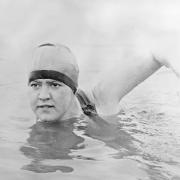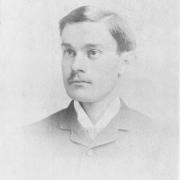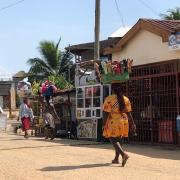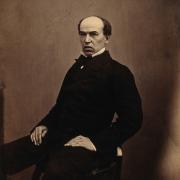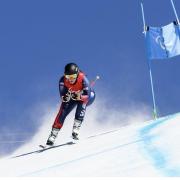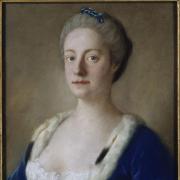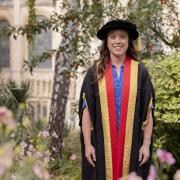Nearly 150 years ago, in April 1876, a young Dutchman, Vincent van Gogh (1853-90), aged 23 years and not yet a professional artist, sailed from Rotterdam to Harwich to London, followed by a train journey to Ramsgate, via Canterbury.
After six years working in a well-paid job for Dutch art dealer Goupil & Cie in The Hague, London, and Paris – during which time he learned much about art and artists – van Gogh was sacked, possibly for expressing negative views on the art, he was selling. During the three-month termination period, he applied for jobs without success.
Still recovering from the shock of being ousted from a comfortable, well-paid career, he accepted an offer in England to teach at a boys’ boarding school for 10 to 14-year-olds in Ramsgate, run by headmaster William Stokes, a teacher, minister and artist. Part of van Gogh’s own education had been undertaken at a boys’ boarding school in Zevenbergen, Holland.

The brief time van Gogh spent in Ramsgate is thought to have contributed to the subjects of the art he produced as a professional painter from 1880-90. In turn, his art would come to inspire many British artists, including Walter Sickert, William Nicholson and Francis Bacon.
The Stokes’ boarding school was located in a terrace house at 6, Royal Road, Ramsgate. Van Gogh, desperate to secure a job, was hired on a month’s trial – payment was board and lodging only – to teach arithmetic, dictation and languages.

Apart from his native Dutch language, he was fluent in French, German and English. He lived nearly opposite the school, in a terraced house rented by William Stokes, at 11 Spencer Square.
On arrival, van Gogh sent a telegram to his parents in Etten, Holland, dated Monday,17 April 1876: ‘Arrived safely. Boarding school, 24 boys. Think it’s all right. Regards to all.’ [Van Gogh Letters no.75]
Van Gogh was a prolific letter writer. A letter sent to his family soon after his arrival enclosed pieces of ‘seaweed’ from the beach – identified today as flustra foliacea (hornwrack) and a hydroid: hydrallmania falcata.
He described Ramsgate during a storm like ‘the towns that Albrecht Dürer used to etch’. His visual descriptions of what he saw and felt often related to paintings, prints and artists he admired.

At 11 Spencer Square, van Gogh lodged with a young teaching assistant and four of the older boys. When his luggage trunks arrived, he put prints from his collection up on the walls of his attic room to make it his own.
Across the square, the schoolroom was on the ground floor with a bayfront window, from which one could view the sea. Vincent drew the view for his family, saying it was from this window that the boys waved goodbye to their families after a visit. Vincent’s letters to his brother Theo tell of the coldness of the schoolhouse, the boys’ washroom with a rotten floor and broken windowpanes and cold water for the boys to bathe: a ‘melancholy sight’. [Van Gogh Letters no.83]
Van Gogh regularly walked along the Ramsgate coastline and also to London – a nearly 100-mile journey – to see his sister, living and working in Welwyn. He was a strong walker.
An artwork painted 10 years later, Shoes, 1886 (Van Gogh Museum), depicts a pair of well-worn boots. A friend of van Gogh’s described the artist buying second-hand work boots at flea markets and wearing them to get them dirty and mud-spattered before painting them.
In 1920 English artist Sir William Nicholson (1872-1949) created his version of the van Gogh 1886 painting, in Miss Jekyll’s Gardening Boots (Tate), depicting the well-worn gardening boots of famed English landscape gardener Gertrude Jekyll (1843-1932).
Walking the roads and fields of his homeland in Neunen, Brabant, various locations in France and through the Kent countryside informed his depictions of peasants and field labourers at work. He used his walks to reflect spiritually on life, his own and the lives of people around him.
An 1889 work by van Gogh The Artist on the Road to Tarascon (destroyed by fire in the Second World War), portrays him walking a country road north of Arles, ‘laden with boxes, props, and canvas…’. It was later copied by Francis Bacon (1909-92) in Study for a Portrait of Van Gogh IV, 1957, part of Bacon’s ‘Homage to Van Gogh’ series [Shown at the exhibit ‘Van Gogh and Britain’ at Tate Britain in 2019].
When the Stokes’ school moved to Isleworth, London in the summer of 1876, van Gogh obtained a similar position at a nearby school, with payment, but he worked too as an evangelist – his father was a minister – to help the poor.
He knew the poorer parts of London from his working-stay for Goupil in 1873-75. He observed and absorbed everything around him. The book London: A Pilgrimage (1872) by Blanchard Jerrold, illustrated by Gustave Doré, moved him greatly.
Dore’s engraving of prisoners’ lives Newgate Exercise Yard, 1872 was appropriated by van Gogh in Prisoners Exercising (after Doré), 1890. Another work he admired, by Giuseppe de Nittis (1846-84) The Victoria Embankment, London, 1875, summed up the plight of the poor in the city. Van Gogh created his poignant version At Eternity’s Gate in 1890, two months before his death from a possible suicide.
Of the British artists that were important to van Gogh, Martin Bailey, co-curator of the 2019 Tate exhibition, said: “I would say, Frank Holl, not a well-known name today, but he painted and drew ‘social realism’ scenes of the downtrodden, and this appealed to Van Gogh’s social conscience.”
Contemporary novels were also a source; Bailey adds: “Van Gogh was an avid reader, and he read and spoke English well. Charles Dickens was his favourite English writer, and he also admired the artists who illustrated various editions of Dickens’ novels. He also particularly loved George Eliot and Shakespeare.”

Van Gogh’s brief time living in Spencer Square is remembered in Kent, for residents of Ramsgate now have a permanent bust of Vincent van Gogh in Spencer Square that was installed the same year as the landmark exhibition.
Its creator, the painter and sculptor Anthony Padgett, said: “Visitors may feel a sense of personal connection to the artist through looking into the eyes of the sculpture. Knowing that Van Gogh was there as a teacher puts a different angle on who people think he was.
“He was not just an artist but had a career as a teacher, an evangelist, an art dealer and through all of this, he was a deep-feeling person who loved people of all kinds. Through connecting to the artist, it helps connect back to an earlier time.”
The sculpture is one in a series of seven (each a different colour) now placed or to be placed permanently in locations with a strong association to van Gogh in England, France, Holland and Belgium.
The presence of the Spencer Square sculpture highlights the young teacher van Gogh’s many attributes, mirroring the feast of work that is on show in ‘Van Gogh and Britain’, a celebration of his humanity, his exceptional art, and inspiration to others.
Further reading
Vincent van Gogh’s surviving letters total 820, plus a further 83 letters written to him, and are available to read at: vangoghletters.org/vg.
Starry Night: Van Gogh at the Asylum, Martin Bailey, White Lion Publishing, 2018
Van Gogh and Britain, Carole Jacobi (Tate exhibition co-curator), Tate Publishing 2019.
Credits
Martin Bailey is co-curator of The EY Exhibition: Van Gogh and Britain. He is an Arts Correspondent for The Art Newspaper and has a regular Van Gogh blog, ‘Adventures with Van Gogh’, www.theartnewspaper.com/adventures-with-van-gogh.
Anthony Padgett, sculptor: www.ayearwithvincent.co.uk






